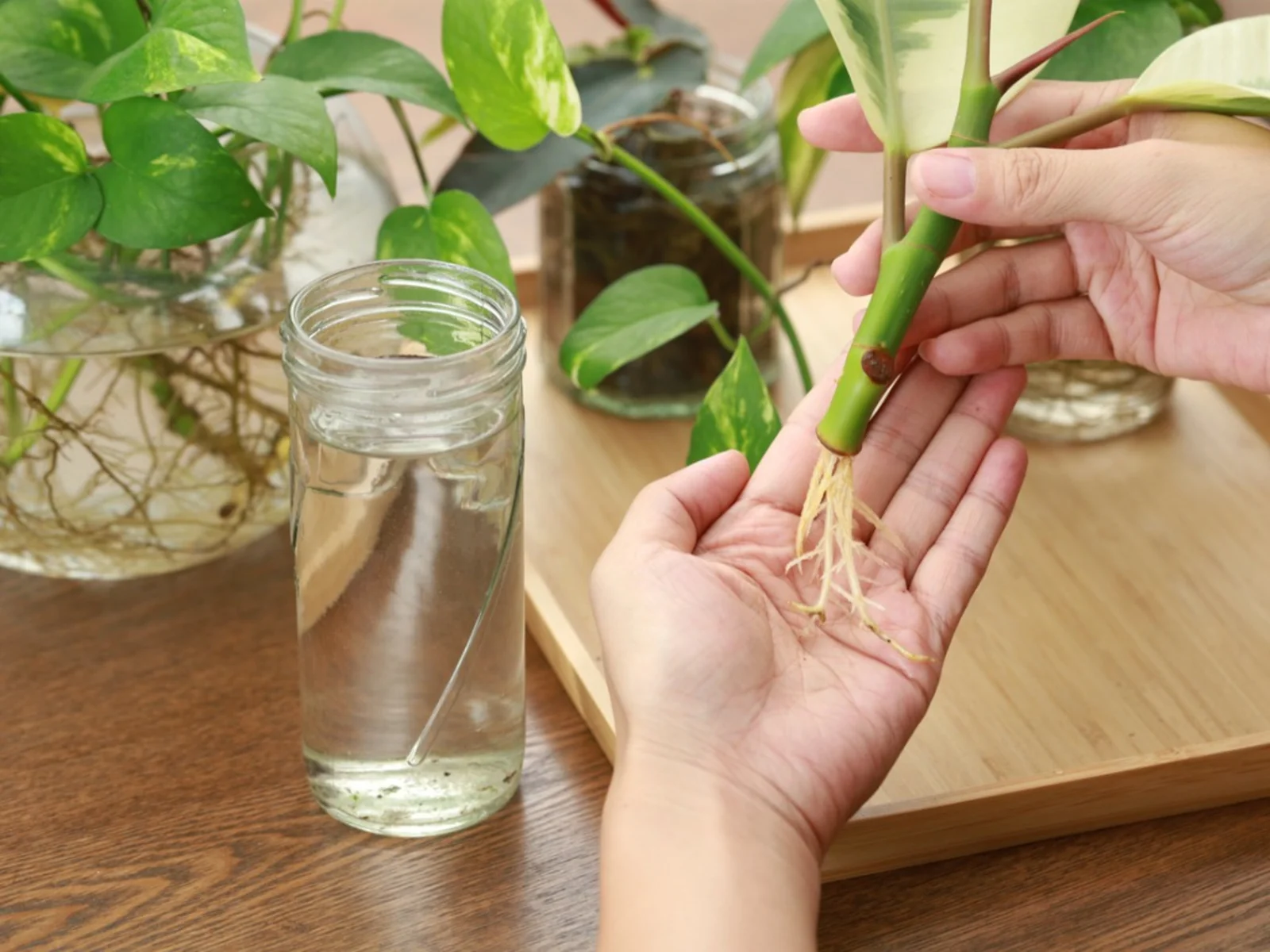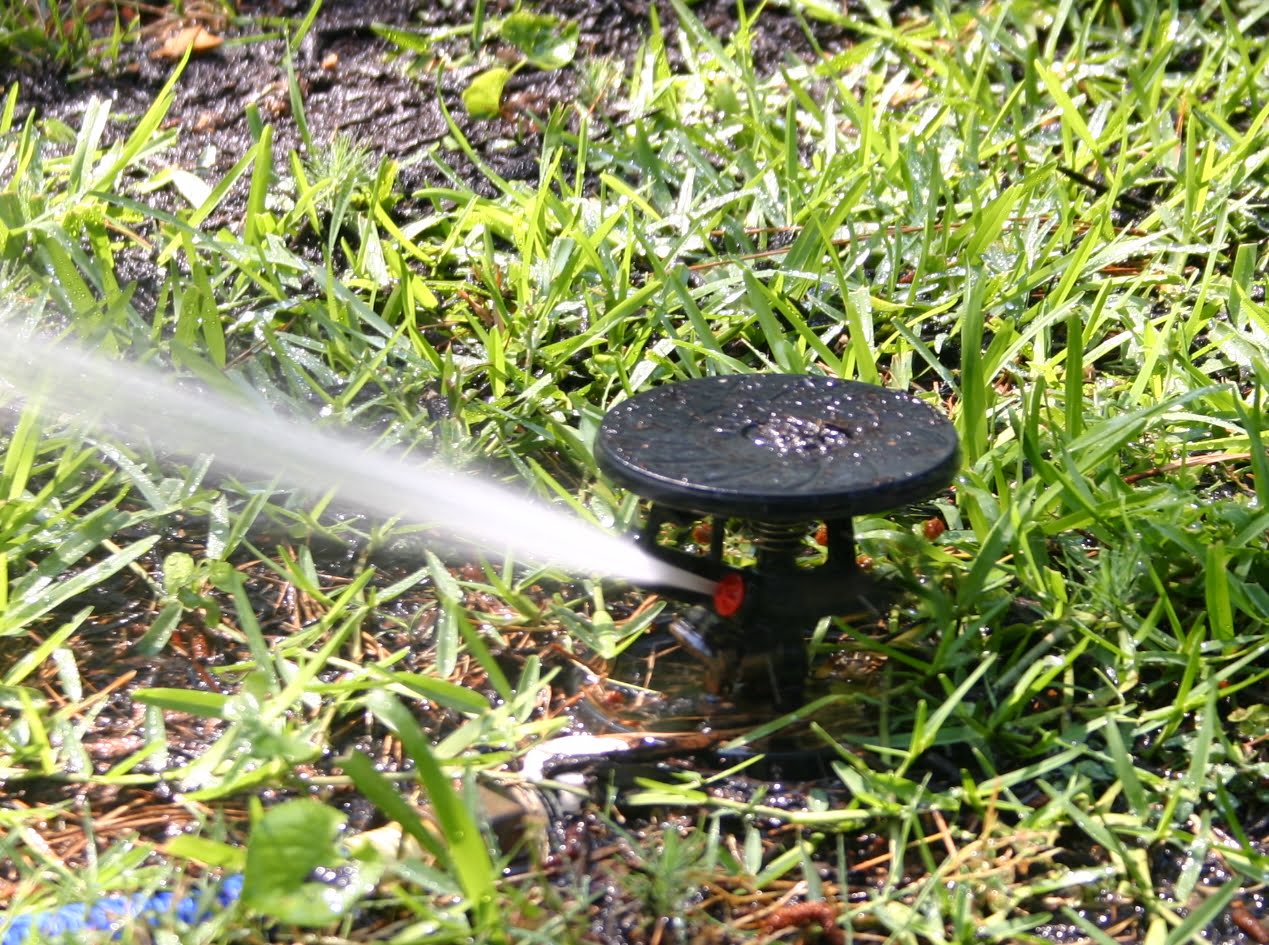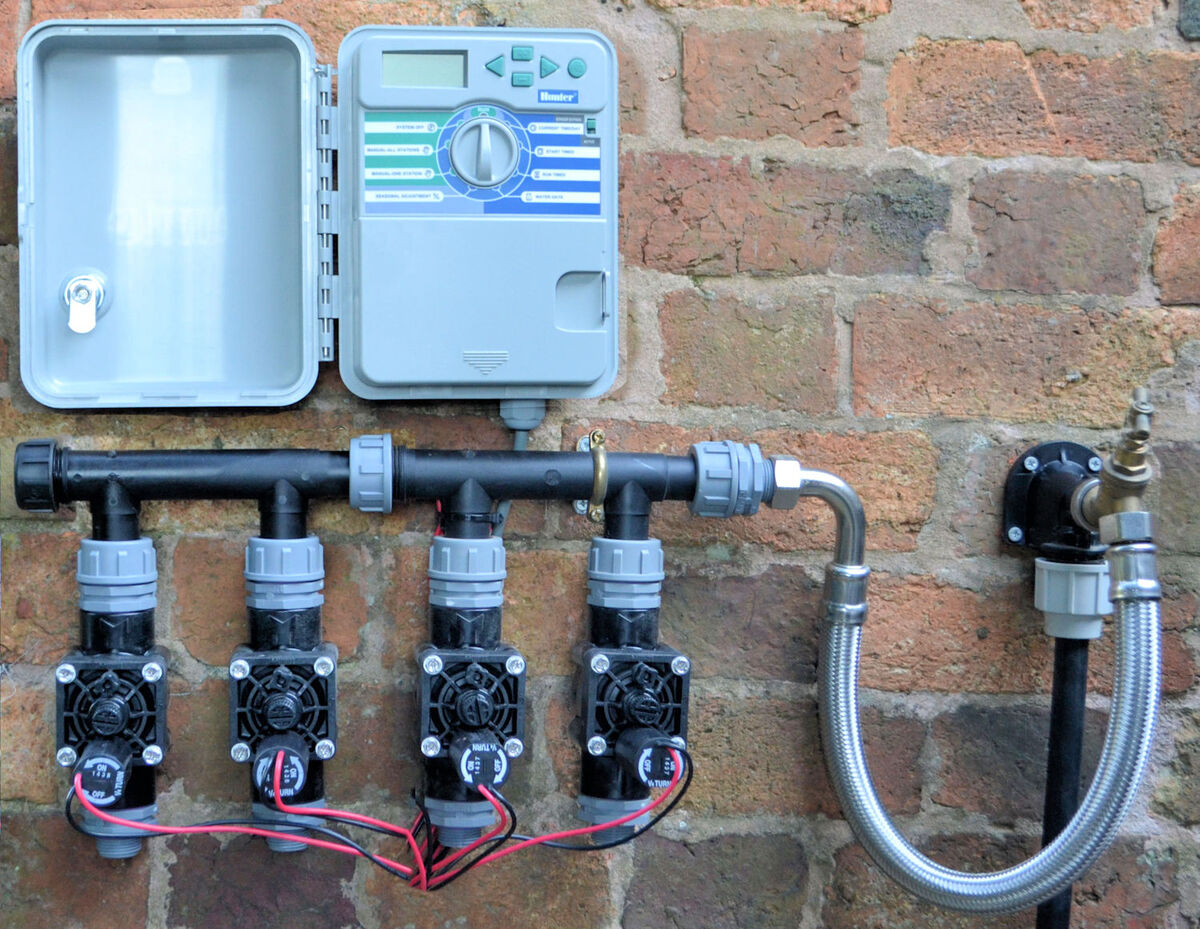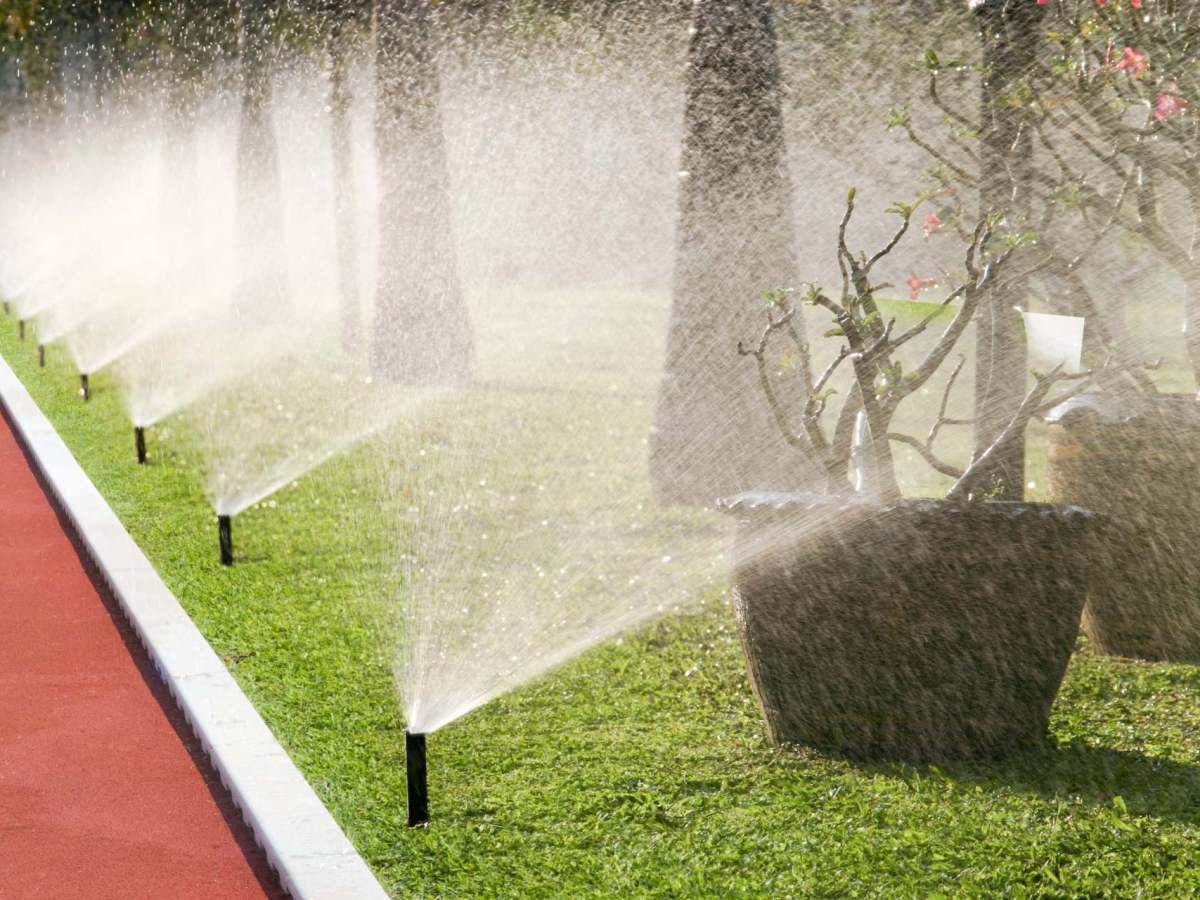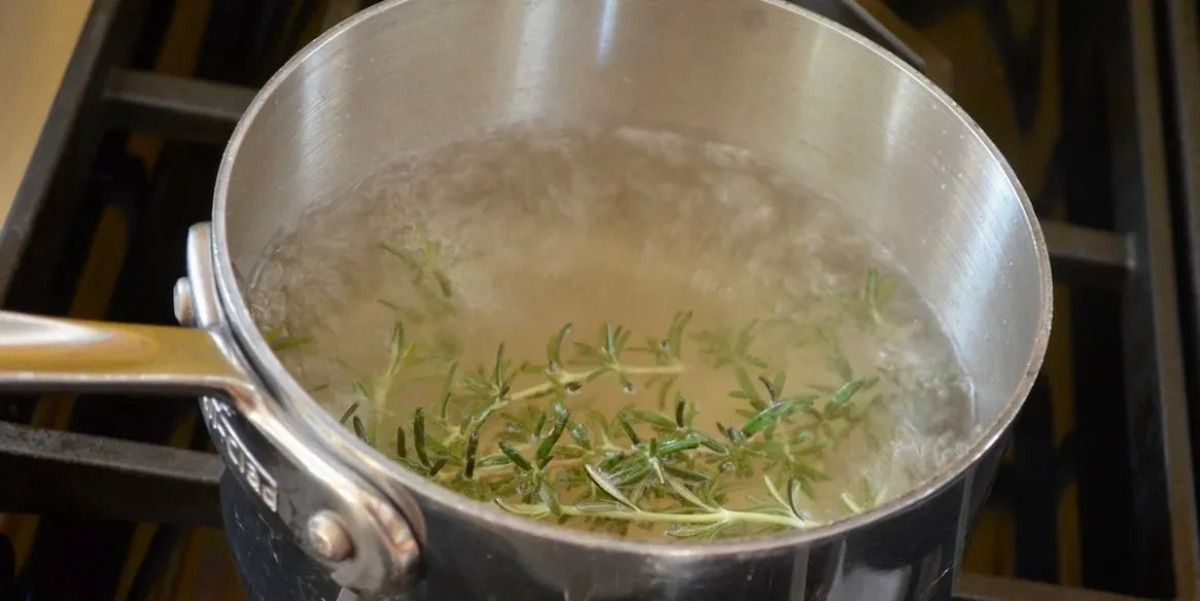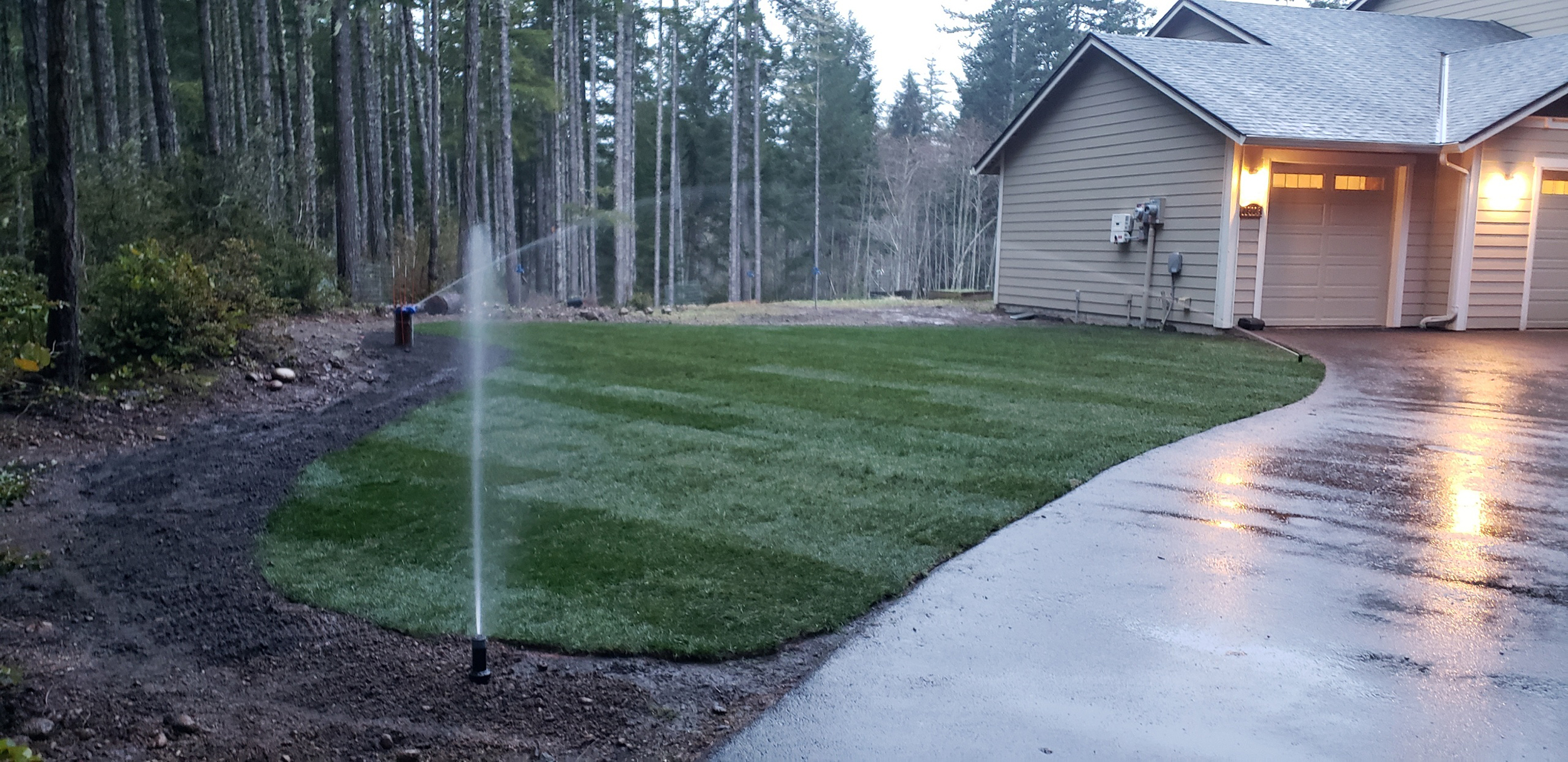Home>Gardening Basics>Tools and Equipment>How Long Should Irrigation System Run
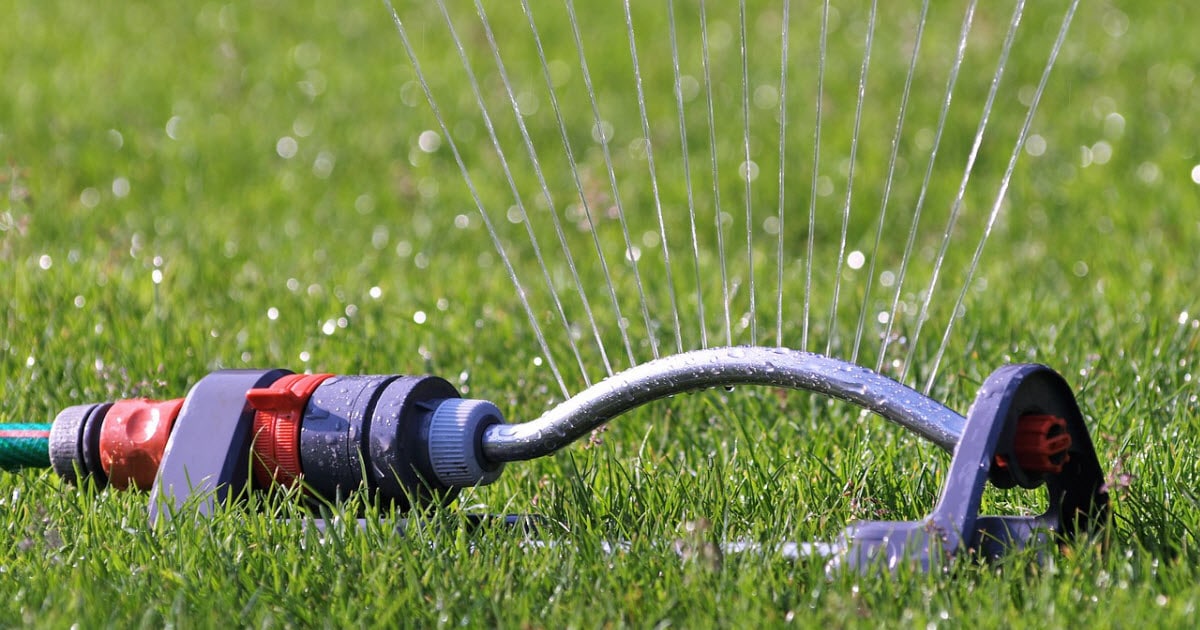

Tools and Equipment
How Long Should Irrigation System Run
Modified: February 7, 2024
Discover the ideal irrigation system run time. Find out how long you should run your irrigation system and the essential tools and equipment required.
(Many of the links in this article redirect to a specific reviewed product. Your purchase of these products through affiliate links helps to generate commission for Chicagolandgardening.com, at no extra cost. Learn more)
Table of Contents
- Introduction
- Factors to Consider for Irrigation System Runtime
- Determining the Water Needs of Plants
- Soil Type and Irrigation System Runtime
- Weather and Climate Influences on Irrigation System Runtime
- Adjusting Irrigation System Runtime Based on Plant Growth Stage
- Understanding Evapotranspiration Rates
- Tips for Optimizing Irrigation System Runtime
- Conclusion
Introduction
Welcome to our comprehensive guide on determining the optimal runtime for your irrigation system. Maintaining a healthy and vibrant landscape requires careful consideration of various factors, including the water needs of your plants, soil type, weather conditions, and the growth stage of your plants. By understanding these factors and making informed decisions, you can ensure that your irrigation system runs for the appropriate duration, promoting water conservation and the overall well-being of your plants.
An irrigation system is a critical tool for efficiently delivering water to your landscape. Whether you have a small garden or a vast commercial space, it is essential to establish an appropriate runtime for your irrigation system to provide your plants with the necessary hydration without wasting water.
In this guide, we will explore the different factors that influence the optimal runtime for your irrigation system. By considering these factors, you will be able to make informed decisions and achieve the ideal balance between water conservation and plant health.
So let’s dive into the details and discover how to optimize the runtime of your irrigation system for a flourishing and sustainable landscape.
Factors to Consider for Irrigation System Runtime
When determining the runtime for your irrigation system, it’s crucial to consider several factors that can influence the water needs of your plants and the efficiency of your irrigation system. By taking these factors into account, you can ensure that your irrigation system runs for the appropriate duration, promoting water conservation and plant health.
1. Determining the Water Needs of Plants: Different plants have varying water requirements based on factors such as species, size, stage of growth, and environmental conditions. It’s essential to research the specific water needs of your plants and adjust the irrigation runtime accordingly. For example, vegetables and annual flowers typically require more frequent watering, while established trees and shrubs may have lower water demands.
2. Soil Type: The type of soil in your landscape plays a significant role in determining irrigation system runtime. Sandy soils drain water quickly, requiring shorter irrigation durations but more frequent watering. On the other hand, clay soils retain water for longer periods, enabling longer irrigation runtimes but infrequent watering. Understanding your soil type and its water retention capabilities will help you establish an appropriate irrigation schedule.
3. Weather and Climate Influences: Weather conditions and climate patterns greatly impact the water needs of your plants. Hot and dry climates may necessitate longer irrigation runtimes to compensate for increased evaporation rates, while cooler and humid environments may require shorter durations. Keep an eye on weather forecasts and adjust your irrigation system runtime accordingly to optimize water efficiency.
4. Adjusting Runtime Based on Plant Growth Stage: The growth stage of your plants should be considered when determining irrigation system runtime. Newly planted or germinating seeds often require more frequent and shorter watering sessions to aid in establishment. As plants mature, they generally need less frequent but deeper watering. Adjusting the runtime based on the growth stage of your plants will prevent over or under watering, promoting healthy growth.
5. Understanding Evapotranspiration Rates: Evapotranspiration (ET) refers to the combined loss of water through evaporation from the soil surface and transpiration by plants. ET rates vary depending on factors such as temperature, humidity, wind speed, and sunlight. Monitoring ET rates in your area can provide valuable insights into the water requirements of your plants, enabling you to adjust your irrigation system runtime accordingly.
By considering these factors, you can establish an appropriate irrigation system runtime that aligns with the specific needs of your plants and the environmental conditions of your landscape. Fine-tuning your irrigation system runtime will not only conserve water but also promote healthy and thriving plants.
Determining the Water Needs of Plants
One of the crucial factors to consider when determining the runtime for your irrigation system is understanding the water needs of your plants. Different plants have varying requirements based on their species, size, growth stage, and environmental conditions. By accurately assessing the water needs of your plants, you can establish an irrigation system runtime that provides optimal hydration without wasting water.
1. Research and Plant Knowledge: It is essential to gather information about the specific water requirements of the plants in your landscape. Different plants have varying tolerances to drought or excess moisture. Consult reputable gardening resources, books, or seek advice from local experts to understand the specific water needs of each plant species in your garden.
2. Observation and Monitoring: Observe your plants closely and monitor signs of dehydration or overwatering. Wilting, yellowing, or drooping leaves often indicate that the plants are not getting enough water, while soggy soil or mold growth signals excessive watering. By paying attention to these visual cues, you can adjust the irrigation system runtime accordingly.
3. Soil Moisture Testing: Conduct regular soil moisture testing to determine the water needs of your plants. You can use a soil moisture meter or simply do a finger test by checking the soil moisture level at different depths. Dry soil in the top inch or two indicates that it’s time to water, while consistently wet soil suggests that you may need to reduce the irrigation runtime.
4. Plant Characteristics: The size and growth stage of your plants also influence their water requirements. Young, newly planted seedlings or transplants generally have shallow and fragile root systems, requiring frequent but shorter watering sessions to establish themselves. Larger, established plants with deep root systems may need less frequent but deeper watering.
5. Environmental Factors: Consider the environmental conditions in your area. Factors such as temperature, humidity, wind speed, and sunlight exposure can affect the water needs of your plants. Hot and dry climates often require more frequent watering, while cooler and more humid environments may necessitate less frequent irrigation.
By combining research, observation, soil moisture testing, and consideration of plant characteristics and environmental factors, you can determine the water needs of your plants. This understanding will guide you in establishing an appropriate irrigation system runtime that ensures your plants receive the right amount of water, promoting their health and vitality.
Soil Type and Irrigation System Runtime
The type of soil in your landscape plays a significant role in determining the appropriate runtime for your irrigation system. Understanding how different soil types retain and release water will help you establish an efficient irrigation schedule that promotes water conservation and plant health.
1. Sandy Soil: Sandy soil is characterized by its larger particles, which allow water to drain quickly. As a result, sandy soil has a low water-holding capacity and requires more frequent irrigation with shorter runtimes. Water applied to sandy soil tends to leach away faster, so it’s important to water in smaller increments multiple times a week rather than a single deep watering session.
2. Clay Soil: Clay soil, on the other end of the spectrum, has smaller particles that compact more tightly, making it less permeable. Clay soil has a high water-holding capacity, so it retains water for longer durations. Irrigation runtimes for clay soil should be longer but less frequent to allow for deep penetration and avoid water runoff. Watering deeply and slowly helps avoid surface ponding and encourages root growth.
3. Loamy Soil: Loamy soil is a mixture of sand, silt, and clay particles, offering a balanced combination of water drainage and retention. Loamy soil typically has good water-holding capacity and adequate drainage, making it ideal for most plants. Adjust irrigation runtimes for loamy soil based on the specific water needs of your plants, considering factors such as plant size, growth stage, and environmental conditions.
4. Organic Matter Content: The presence of organic matter in your soil, such as compost or leaf mulch, can improve water retention and drainage. Adding organic matter to sandy soil can increase its water-holding capacity, while enhancing the structure of clay soil to improve drainage. Soils with higher organic matter content generally require less frequent irrigation since they can hold water for longer durations.
5. Advanced Technology and Soil Moisture Sensors: Utilize advanced irrigation technologies, such as soil moisture sensors, to accurately determine soil moisture levels. These sensors can provide real-time data on soil moisture content, allowing you to fine-tune your irrigation system runtime based on the specific conditions of your soil. This helps prevent overwatering or underwatering, promoting water conservation and optimal plant growth.
Understanding the characteristics of your soil and adjusting the irrigation system runtime accordingly is crucial for efficient water usage and plant health. By adapting your irrigation schedule to the specific needs of your soil type, you can ensure that your plants receive adequate hydration while avoiding the wasteful use of water.
Weather and Climate Influences on Irrigation System Runtime
Weather conditions and climate patterns have a significant impact on the water requirements of your plants and, therefore, the runtime of your irrigation system. By considering the local weather and climate influences, you can optimize your irrigation system runtime to conserve water and promote the health and growth of your plants.
1. Temperature: Higher temperatures increase the evaporation rate, leading to increased water loss from the soil and the plants. In hot climates, it may be necessary to increase the irrigation system runtime to compensate for the additional water loss. Conversely, in cooler temperatures, shorter runtimes may be sufficient to meet the water needs of your plants.
2. Humidity: Humidity levels impact the rate of evaporation from the soil and plant leaves. In areas with high humidity, water loss through evaporation is typically lower, and shorter irrigation runtimes may be sufficient. In contrast, in dry and arid regions with low humidity, longer irrigation runtimes might be needed to adequately hydrate the plants.
3. Wind Speed: Wind can increase the rate of transpiration, causing plants to lose moisture more rapidly. If you live in a windy area, consider adjusting your irrigation system runtime to account for the increased water loss due to transpiration. Longer runtimes may be necessary to ensure that plants receive enough water to offset the effects of wind-induced moisture loss.
4. Sunlight Exposure: The intensity and duration of sunlight exposure impact the water needs of your plants. Plants in full sun generally require more water compared to those in shaded areas. Take into account the sun exposure of different areas in your landscape when determining the irrigation system runtime. Adjust the runtime accordingly to ensure that plants in sunnier locations receive adequate hydration.
5. Rainfall: Rainfall can significantly influence irrigation system runtime. Monitoring rainfall levels and incorporating them into your irrigation schedule is crucial. If there has been recent rainfall, you may need to adjust the runtime to avoid overwatering. On the other hand, during dry spells or drought conditions, you may need to increase the runtime to compensate for the lack of natural precipitation.
By staying informed about the local weather patterns and considering the specific climate influences in your area, you can make informed decisions about the runtime of your irrigation system. Adapting your irrigation schedule to the weather and climate conditions will promote water conservation, prevent water waste, and ensure your plants receive the appropriate amount of water for healthy growth.
Adjusting Irrigation System Runtime Based on Plant Growth Stage
The growth stage of your plants is an important factor to consider when determining the appropriate runtime for your irrigation system. As plants progress through different stages of growth, their water requirements change. By adjusting the irrigation system runtime based on the growth stage of your plants, you can ensure they receive the optimal amount of water for healthy development and minimize water waste.
1. Seed Germination and Early Growth: During the seed germination and early growth stage, it’s crucial to provide consistent moisture to support root development and establishment. Water the soil gently and frequently to maintain adequate soil moisture without causing water pooling or overly saturated conditions. Shorter irrigation runtimes, more frequently applied, can help provide the necessary moisture for seedlings without flooding the soil.
2. Vegetative Stage: In the vegetative stage, the focus is on the growth of leaves and stems. During this stage, plants generally require regular, consistent watering to sustain healthy growth. Adjust the irrigation system runtime to ensure sufficient moisture penetrates the soil, reaching the root zone. Deep watering encourages root development, leading to stronger and more resilient plants.
3. Flowering and Fruit Development: As plants enter the flowering and fruiting stage, their water requirements may increase. This is the stage where plants invest energy in producing flowers, and eventually, fruits. Adequate irrigation is crucial to support the growth of these reproductive structures. Adjust the runtime to deliver enough water to the root zone without causing excess moisture, which can lead to rot or disease in flowers and fruits.
4. Maturity and Dormancy: Mature plants typically develop extensive root systems that can access water deeper in the soil. They often require less frequent irrigation but with longer runtimes to reach the deeper roots. Once plants enter the dormancy stage, their water requirements decrease further. Adjust the irrigation system runtime to provide a minimal amount of water to sustain plant health during dormancy, considering factors such as plant species and weather conditions.
5. Monitoring and Adjustment: Regularly monitor your plants for signs of over or under watering. Inspect the soil moisture levels and observe the appearance of the plants. Adjust the irrigation system runtime accordingly to address any imbalances. Consider factors such as weather conditions, plant health, and specific water requirements of different plant species when fine-tuning the irrigation schedule.
By understanding the growth stages of your plants and making necessary adjustments to the irrigation system runtime, you can ensure that they receive the appropriate amount of water for each developmental phase. This promotes healthy growth, conserves water, and prevents issues such as overwatering or underwatering that can negatively impact plant health.
Understanding Evapotranspiration Rates
Evapotranspiration (ET) is a crucial factor to consider when determining the irrigation system runtime. Evapotranspiration refers to the combined process of water loss through evaporation from the soil surface and transpiration from plant leaves. Understanding the evapotranspiration rates in your area allows you to make informed decisions about the duration and frequency of irrigation, resulting in efficient water usage and optimal plant health.
1. Factors Affecting Evapotranspiration: Evapotranspiration rates are influenced by several factors, including temperature, humidity, wind speed, and sunlight exposure. Higher temperatures, low humidity, strong winds, and intense sunlight all contribute to higher evapotranspiration rates, meaning that more water will be lost from the soil and plants.
2. Evapotranspiration and Plant Water Requirements: Evapotranspiration rates provide valuable insights into the water needs of your plants. By monitoring the evapotranspiration rates in your region, you can estimate the amount of water that needs to be replaced to maintain adequate soil moisture and prevent plant stress. Adjusting the irrigation system runtime based on evapotranspiration rates ensures that your plants receive sufficient water without wasteful overwatering.
3. ET-Based Irrigation Scheduling: Evapotranspiration-based irrigation scheduling uses real-time or historical evapotranspiration data to determine the optimal irrigation system runtime. Specialized weather stations or online resources provide ET data specific to your location. By incorporating this data into your irrigation schedule, you can determine the appropriate runtime and frequency of irrigation sessions, considering the current evapotranspiration rates.
4. Benefits of Using Evapotranspiration Data: Using evapotranspiration data for irrigation scheduling helps optimize water use and conserve resources. By aligning irrigation with the actual water needs of your plants, you can prevent under or overwatering, reducing the risk of water stress or waterlogged soil conditions. This fine-tuning improves plant health, minimizes water waste, and saves on water bills.
5. Advanced Technology and Evapotranspiration: Technology advancements have made it easier than ever to access real-time evapotranspiration data. Utilizing soil moisture sensors, weather stations, or mobile apps that provide ET information allows you to make informed decisions about irrigation system runtime adjustments. These technologies take into account the local weather conditions, such as temperature and humidity, to provide accurate and up-to-date information for efficient irrigation management.
By understanding evapotranspiration rates and incorporating this data into your irrigation schedule, you can optimize water usage and ensure that your plants receive the appropriate amount of water. Evapotranspiration-based irrigation scheduling improves water efficiency, promotes healthy plant growth, and contributes to sustainable landscape management.
Tips for Optimizing Irrigation System Runtime
To ensure efficient water usage and promote healthy plant growth, here are some tips for optimizing your irrigation system runtime:
1. Regularly Monitor Soil Moisture: Check the soil moisture levels in your landscape regularly using a soil moisture meter or conducting a simple finger test. This will help you determine if your plants need watering or if the soil retains enough moisture, allowing you to adjust the irrigation system runtime accordingly.
2. Water Deeply and Infrequently: Instead of shallow and frequent irrigation sessions, water deeply but less frequently. This encourages plants to develop stronger and deeper root systems, allowing them to access water from lower soil levels. Deep watering also helps prevent water runoff and promotes better moisture retention in the soil.
3. Utilize Mulch: Apply a layer of organic mulch, such as wood chips or straw, around your plants. Mulch helps retain soil moisture by reducing evaporation, keeping the soil cooler, and suppressing weed growth. This allows you to extend the time between irrigation sessions and reduce the overall runtime of your irrigation system.
4. Install Drip Irrigation or Watering Systems: Consider using drip irrigation or other water-efficient systems that deliver water directly to the plant roots. Drip irrigation reduces water loss through evaporation and provides targeted hydration where it is most needed. These systems can help optimize the irrigation system runtime and promote water conservation.
5. Adjust Irrigation According to Seasonal Changes: Modify the irrigation system runtime based on seasonal variations. During cooler seasons or periods of increased rainfall, you may need to reduce the irrigation runtime. In hotter and drier seasons, adjust the runtime to compensate for increased water loss due to evaporation and plant transpiration.
6. Consider the Time of Day for Irrigation: Watering during the early morning or late evening hours when temperatures are cooler and evaporation rates are lower is more efficient. This allows plants to absorb water before the heat of the day, reducing water loss and promoting better plant hydration.
7. Regularly Inspect and Maintain Your Irrigation System: Check for leaks, clogged sprinkler heads, or broken pipes in your irrigation system. Regular maintenance ensures that water is distributed evenly and efficiently, preventing water waste and optimizing the irrigation system runtime.
8. Observe Your Plants and Adjust as Needed: Pay attention to the health and appearance of your plants. If you notice signs of overwatering or underwatering, such as yellowed leaves or wilting, adjust the irrigation system runtime accordingly. Each plant may have different water requirements, so it’s important to make individual adjustments based on their specific needs.
By implementing these tips, you can optimize the runtime of your irrigation system, conserving water while supporting the health and vitality of your plants. Remember to regularly assess and adjust your irrigation schedule based on the changing needs of your landscape.
Conclusion
Optimizing the runtime of your irrigation system is essential for promoting water conservation and maintaining healthy and thriving plants. By considering factors such as the water needs of your plants, soil type, weather conditions, plant growth stage, and evapotranspiration rates, you can establish an efficient irrigation schedule that meets the specific requirements of your landscape.
Understanding the water needs of your plants is paramount. Conduct research, observe your plants closely, and monitor soil moisture levels to determine the optimal irrigation system runtime. Adjust the runtime based on the growth stage of your plants, considering factors such as seed germination, vegetative growth, flowering, and dormancy.
Soil type plays a significant role in irrigation system runtime as well. Sandy soil requires shorter but more frequent watering, while clay soil requires longer but less frequent irrigation. Adjusting the runtime based on soil type helps maintain the right moisture balance and prevents water waste.
Weather and climate influences, such as temperature, humidity, wind speed, and sunlight exposure, also impact irrigation system runtime. Adapt the runtime accordingly to compensate for factors that affect water loss, such as evaporation and transpiration.
Monitoring evapotranspiration rates provides valuable insights into the water needs of your plants. Using evapotranspiration data, you can align the irrigation schedule with the actual water requirements of your plants, promoting water efficiency and preventing under or overwatering.
Finally, implementing practical tips like regular soil moisture monitoring, deep watering, mulching, and maintaining your irrigation system, will help optimize runtime and promote responsible water usage.
By carefully considering these factors and following the tips provided, you can establish an efficient and effective irrigation system runtime that conserves water, promotes healthy plant growth, and contributes to a sustainable and thriving landscape.
